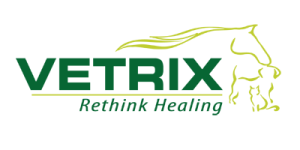 Bite wounds are one of the most common reasons dogs see their veterinarians. If a dog is bitten or gets into a fight with another dog, this is what needs to happen first:
Bite wounds are one of the most common reasons dogs see their veterinarians. If a dog is bitten or gets into a fight with another dog, this is what needs to happen first:
- As the dog’s owner, stay calm. Panic will only make the situation worse.
- Don’t get between your dog and the other dog(s) to break up the fight. You could also get bit in the process.
- Focus on getting your dog away from the other dog. A loud clap or another distracting sound may help get your dog’s attention so you can call or signal him to you.
- Don’t scream at the other dog, as this could make the situation feel even more threatening to the dogs.
- Ask the other dog owner (if present) if their dog is up to date on their vaccines. If the pet owner isn’t present or the other dog involved is a stray, try to get pictures at the very least.
- Once your dog is safely away from the dog who bit him, contact your vet immediately or head to your nearest emergency animal hospital.
Why Do Dogs Bite?
Biting is often part of play for puppies. In adult dogs, multiple motives or causes for biting can stem from competitive issues or reactions to perceived threats. Additionally, several factors influence the severity of a dog bite and the health risk it can pose to a pet. This is why seeing your veterinarian as quickly as possible after your dog has experienced a bite is a good idea.
Treating Bite Wounds in Dogs
Dog bites can cause significant injury to the skin and soft tissues. A dog’s teeth and jaws are powerful; a bite wound can result in torn muscles and skin. Not all bite wounds are big, though. Just because a bite wound is small doesn’t mean it isn’t a cause for concern. Minor bites can heal themselves quickly but, in doing so, can trap bacteria in the wound that can result in an abscess.
Infections are the primary concern for any dog bite, but other serious issues can develop if not treated properly. Typically, a vet will examine and thoroughly clean the bite wound and then provide a broad-spectrum antibiotic to help fight infection and prevent further complications with the wound site. Or, the vet can use Vetrix’s Healion Amniotic Wound Matrix as part of their patient’s bite wound treatment plan.
Healion is a decellularized amniotic membrane supplied in fine, dry, sterilized white powder form for veterinary use. Healion amniotic wound matrix leverages the natural healing properties of the amnion to modulate inflammation and create an environment conducive to rapid cell migration.
You apply it to the wound site and appropriately bandage it to create a sterile healing environment. The bite should be re-examined every 4-5 days, and a single application is usually sufficient.
How To Help A Dog Heal After A Bite
As a vet, your priority is preventing your patient’s bite wound from getting infected. Start treating bite wounds with a fast and effective treatment option that makes patients and clients happy. Add Healion to your medical toolkit today. Order now.

